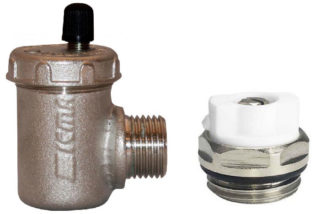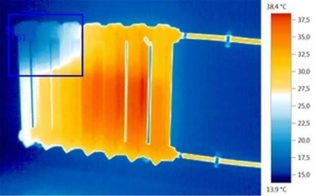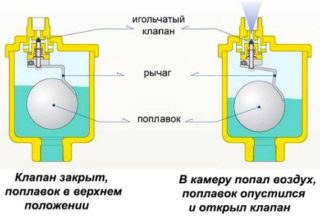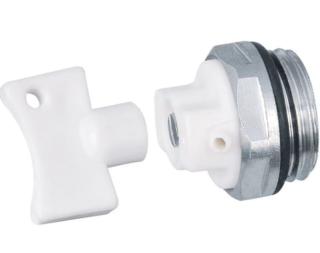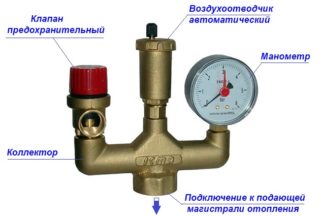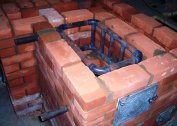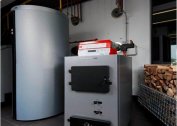An air valve for heating is an integral part of all existing heating systems, including underfloor heating. If it is available, it is possible to manually or automatically get rid of the air that accumulates in the pipes and radiators of closed circuits. The right choice of the air bleed valve for the heating system will help acquaintance with its device and principle of operation.
Need for air bleed valve
The need for a valve to vent air from the heating system or a special air vent is due to the following reasons:
- the need to bleed air drops, for one reason or another, accumulating in heating systems (including underfloor heating);
- elimination of uneven heating of radiators arising from the formation of air “plugs”;
- the need to protect problematic sections of the pipeline laid in the area of ceilings (at the highest possible height).
At points high above the floor, the likelihood of air congestion increases dramatically. If you do not remove them in a timely manner, this will interfere with the normal circulation of the coolant and create an obstacle to high-quality heating of the home.
Traffic hazard
Small droplets of air, dissolving in a carrier circulating through the pipes, can eventually disable them along with batteries and other equipment items. The corrosive effect of decomposed air molecules increases significantly due to the high oxygen content. Gases appearing in the pipeline and batteries accelerate the corrosion process and form air jams that interfere with the normal functioning of the heating system. In technical terms, this is manifested as follows:
- The clusters formed in the upper part of the system turn into a kind of “heat-insulating barrier”, which reduces the amount of heat created to heat the room.
- For the same reason, the circulation of the coolant decreases. In adverse conditions, its movement through the pipeline is completely blocked, which causes rapid cooling of the batteries and stops the operation of the entire system.
- The pumping equipment installed in the heating circuit is not always designed to work with a carrier in which there are a large number of air molecules.
In the presence of traffic jams, the circulation of the medium along the heating circuit is accompanied by unpleasant gurgling sounds that tire the residents of the apartment or house.
Types of Air Valves
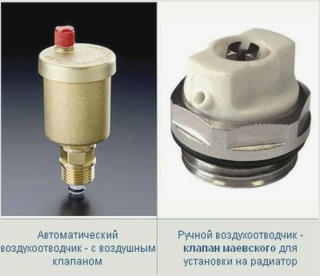 By the method of operation, all known air vents are divided into devices that are manually operated or bleed air in automatic mode. In the first case, the accumulated air masses are removed by the person himself. An automatic valve for bleeding air from the heating system works without human intervention. It works due to the presence of a mechanism that regulates the volume of accumulated air bubbles.
By the method of operation, all known air vents are divided into devices that are manually operated or bleed air in automatic mode. In the first case, the accumulated air masses are removed by the person himself. An automatic valve for bleeding air from the heating system works without human intervention. It works due to the presence of a mechanism that regulates the volume of accumulated air bubbles.
Mayevsky's crane is a type of air vents designed for the manual removal of its particles. In addition, they are mounted in hard-to-reach areas of the pipeline, where the installation of a typical valve is impossible for one reason or another. According to the place and method of placement, these devices are divided into the following types:
- direct-flow;
- angular.
Direct valve devices in their appearance resemble an ordinary candle. They are installed vertically at the intended place in the pipeline section or in the safety group. Devices of the second type differ from those described by the presence of angular conjugation, which allows them to be more conveniently and compactly placed on the radiator. During installation, special attention is paid to the strictly vertical position of the discharge section (descent).
Device and principle of operation
The automatic device has a very simple design. Consists of the following main parts:
- a case made of durable and non-corrosive metal (most often - bronze or stainless steel);
- cover with a calibrated hole for bleeding accumulated air;
- float placed inside the housing.
The principle of operation of an automatic air valve is simple. The air accumulating in the system is gradually shifted in its direction, where it acts on the float located in the chamber, raising it slightly. Above the guides is a bleed hole through which air bubbles under pressure of water masses come out.
The specificity of the devices is that for normal operation, the bleed mechanism should be located at the highest point in the pipeline network. Light air rushes into this part of the system. If there is no such point, the automatic valve will not work. In this situation, it will be necessary to provide for the installation of a manual air vent such as a Maevsky crane.
Pros and cons of using
Advantages of installing an air valve:
- if present, the probability of damage to pipelines and batteries is reduced;
- it is possible to evenly distribute heat among the strapping elements (radiator batteries, in particular);
- humidity in the heated room is normalized, there is practically no condensation;
- the likelihood of the appearance and reproduction of mold and fungi is reduced.
Most of the well-known models can be mounted independently, which saves on paying for the services of specialists.
The presence of many advantages does not exclude the negative aspects of the use of the valve for bleeding air.
- In severe frosts, some models freeze and stop working normally.
- Manual samples of valve mechanisms require constant human intervention.
- When adjusting the device in manual mode, too many factors must be considered.
- Some models of automatic devices are equipped with a not very reliable electric drive.
- The location of the valve is not too convenient for its maintenance.
- In the absence of a special filter, dust and many small particles accumulate in the system that impair its operation.
Most shortcomings can be avoided if appropriate preventive measures are taken. Often they come down to the acquisition of automatic valves equipped with replaceable fine filters. When considering the pros and cons, it is noted that the advantages prevail over easily removable disadvantages.
Features of installing valves for air bleeding
When installing the air valve, the following factors must be taken into account:
- Air in the heating systems accumulates at the highest points of the heating equipment circuit. This feature is characteristic not only for radiators, but also for collectors of underfloor heating and various types of heating boilers.
- If the place for installing the air valve is improperly selected, the thermal balance is violated, the efficiency of heating the rooms decreases sharply. For a warm floor system, this violation is accompanied by the appearance of zones with more or less heating.
To avoid the undesirable consequences of errors made during installation, it is important to know that automatic and manual air warmed valves are installed in the following places:
- on collectors of equipment for underfloor heating;
- in the area of the pump and mixing unit of the heating boiler;
- on standard batteries;
- on other auxiliary equipment of heating boilers (the highest point located near the expansion tank is selected);
In addition, the place where the heat-insulated valve KVU is installed, often becomes a hydraulic arrow.
